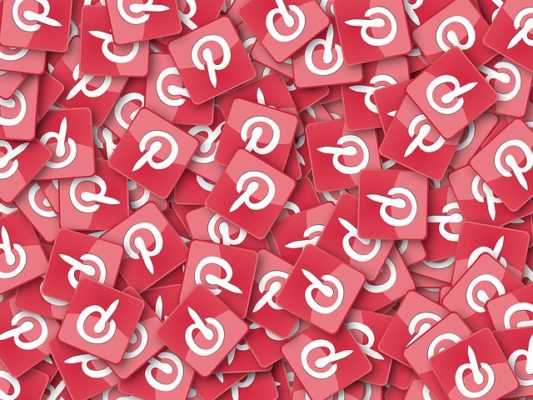
You must have heard of Pinterest. It’s a social media site with a focus on images and videos arranged in a bulletin board style, and it has become one of the largest social networks, no longer just popular with arts and craftsy types and bored suburban mothers. Unlike Facebook and Twitter, which rely on content from a network of friends and followers, Pinterest is made up of people who share and search based on topics of interest rather than relationships. It would be silly to ignore that Pinterest can be powerful tool when it comes to driving ecommerce sales. Here are some ways you can use Pinterest to market your ecommerce store to drive more sales.
Firstly, you need to create a Pinterest account. This must be a business account, and you need to verify your website with Pinterest. This prevents copycat accounts. It doesn’t matter if you’re selling on Shopify, Amazon, eBay, Adobe Commerce or whatever – you still count as a business.
Use an eye-catching profile picture
Choose a profile image that helps people easily recognize your business – your brand’s logo for example. Profile images should be scaled to 160×165 pixels. You should also include a brief description to introduce your company’s to Pinterest users.
Plan what you want to well on pinterest
Your Pinterest account for your ecommerce business should act like a second ecommerce site. Think of it in the same way as a Shopify Amazon integration. Think carefully about the categories or boards that you want to create, and decide what type of products from your ecommerce site that you want to put under those boards.
If you’re a clothing brand, for example, you could create separate boards for t-shirts, dresses and accessories. You could also have boards dedicated to completed outfits, so customers can have an idea of which items work well together.
Ask yourself how each pin will be of use to your ideal customer: if your site is designed to sell handmade crafts, then don’t have a board of kitchen utensils.
Create and organize boards
You want to use Pinterest to show off your brand’s personality, so you should create a variety of boards which do exactly that. Add enough pins to make each board feel substantial – you don’t want 3 or 4 boards with just a couple of images on them because that just looks haphazard and incomplete. Remember: users can pick and choose which boards they want to follow, so not every board has to appeal to everyone. Pinterest suggests that, before you get started pinning away, you should take into consideration what users care about and tailor your strategy to address them.
You should also do the following:
- Ensure each board is clearly named. Try to be creative, but limit names to 20 characters or less;
- Add a description to inspire people to follow your boards and help you appear in searches;
- Choose a relevant cover pin for each board that gives people a sense what content they can expect from that board.
Add a “Pin it” Button or Widget to your product pages
Adding a Pin it button or widget to product pages on your website provides an easy way for people to share your content on their boards.
Use high quality images
Your users won’t be inspired by poor quality photos, and if they’re not inspired they won’t follow you, and they won’t buy from your store. The best way to get your pins to spread around Pinterest is to create stunning, high quality pictures that people will want to share, so make sure images look professional and are at least 600 pixels wide as these look best, and remember that only images that are at least 100×200 or 200×100 are Pinnable.
Create helpful pins
Okay, so not all pins need to be beautiful. But if they’re not beautiful, they do need to be helpful or informative. In fact many of the most popular pins on Pinterest are every day how to’s, infographics and “instructographics”. If one of your products can solve someone’s problem, and you’re able to convey that through a instructograph, or a picture with a tip, then you’re much more likely to convert casual lookers into buyers.
Pinterest SEO
Make sure your company username is optimized. This relates back to our first point: creating a Pinterest Business account. The username is limited to 15 characters, so if your company name fits – use it. If your company name is longer than this limit, create a shortened version that is easy to understand.
Include keywords in your “About” section. Clearly explain who your company is and what you do as this will make it easier for customers to find you in a search.
Link back to your website. The ultimate goal of marketing on Pinterest is to drive traffic back to your website. It’s good for inbound linking, and it’s good for getting clicks which may turn into sales on your ecommerce site. Include links to your products in every product pin you post an include your website in your profile (if you use more than one ecommerce store, for example a Adobe Commerce Amazon integration, include links to both).
Use names for your Boards which reflect your keywords. When you’re making a new board name it based on what you will be pinning to it, and think like your consumer when you are naming it. What are they looking for when they find your products?
Make good use of pin descriptions
Pinterest uses hashtags, like Twitter and Tumblr. Include one to three hashtags in per pins, using words you want to be searched for. And try to think outside of the box. If you are a wedding planner, for example, use hashtags that include your location and any particular specialties your are offering with your pins.
So there you have it: how to use Pinterest to market your ecommerce store.

